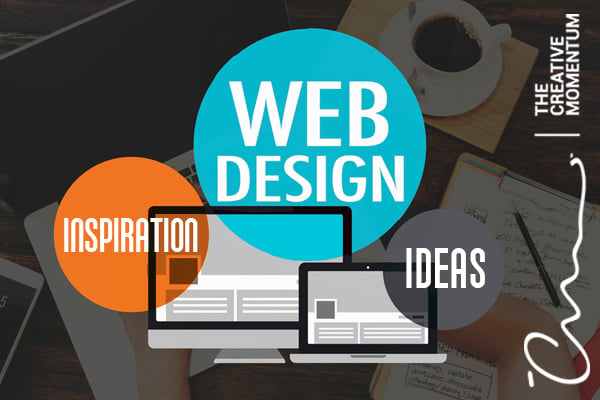Aligned Position Web Design: Boost Your Brand’s Visibility with a Stunning Website
Aligned Position Web Design: Boost Your Brand’s Visibility with a Stunning Website
Blog Article
The Best Sorts Of Website Design to Boost Customer Experience and Engagement
In the ever-evolving landscape of digital interaction, the efficiency of Web style dramatically affects individual experience and engagement. Different design techniques, such as minimal, responsive, and interactive layouts, each deal distinct advantages that can provide to diverse user demands.
Minimalist Web Layout
As electronic landscapes come to be significantly chaotic, minimal website design has become a powerful strategy to enhancing individual experience. This layout philosophy focuses on simpleness, concentrating on necessary aspects while getting rid of unnecessary interruptions. By making use of sufficient white room, simple navigation, and a minimal shade palette, minimalist design fosters quality and directs user interest to crucial material.
The core concept of minimal Web layout is to produce a smooth communication for users. By minimizing cognitive load, individuals can swiftly comprehend details without feeling bewildered. This straight technique not just enhances functionality but additionally urges involvement, as visitors are more probable to discover a site that is easy and aesthetically appealing to browse.
Furthermore, minimal design commonly emphasizes typography and images, using these aspects purposefully to share messages properly. This concentrate on important parts can enhance brand name identification and produce a remarkable customer experience. Basically, minimal Web style is not just a fad; it is a thoughtful technique that identifies the value of user-centered layout. By removing nonessential elements, developers can produce an extra appealing, effective, and pleasurable Web experience for all customers.
Receptive Website Design
In today's varied electronic environment, responsive Web style has actually become vital for producing a seamless individual experience throughout a wide range of gadgets. As customers gain access to sites on smartphones, tablet computers, laptop computers, and desktop computers, the ability of an internet site to adapt its format and material to different display sizes and resolutions is crucial.
Responsive website design employs adaptable grids, pictures, and CSS media questions to make sure that Web content is provided optimally, despite the tool used. This technique not just enhances the visual appeal of a website but additionally significantly improves functionality. Individuals are extra most likely to involve with a website that supplies a constant experience, as it gets rid of the disappointment of needing to focus or scroll exceedingly.
By taking on responsive design, organizations can improve their presence and get to a wider target market. In summary, receptive Web style is a basic practice that improves customer experience, engagement, and general satisfaction.
Interactive Web Style
Receptive Web style lays the foundation for enhancing user experience, yet interactive website design takes this a step even more by involving customers in a more dynamic method - Aligned Position Web Design. By including elements such as computer animations, clickable models, and real-time responses, interactive website design astounds users, drawing them into a richer surfing experience
This approach not only promotes interaction yet additionally encourages users to explore content proactively instead of passively consuming it. Techniques such as gamification, where users make benefits for completing jobs, can considerably improve the moment invested on a site and enhance total fulfillment. Furthermore, interactive features can streamline intricate details, making it much more satisfying and absorbable.

Integrating interactive layout elements can likewise lead to greater conversion rates, as customers are most likely to involve with a website that actively involves them. Aligned Position Web Design. Eventually, interactive website design transforms individual experiences right into remarkable trips, guaranteeing that visitors return time after time
Apartment Layout
Defined by its minimalistic strategy, level style stresses simpleness and capability, removing away unnecessary components and concentrating on important features. This design viewpoint prioritizes functionality, making sure that customers can browse user interfaces with simplicity and effectiveness. By utilizing a tidy aesthetic, flat design eliminates the clutter frequently found in more ornate designs, therefore boosting customer focus on material and functionality.
The characteristic of level layout depends on its use bold colors, straightforward typography, and geometric forms. These components add to a visually appealing interface that is both approachable and modern-day. In addition, level design fosters a feeling of clearness, enabling individuals to determine vital actions and details without diversion.
Furthermore, level style is particularly reliable in receptive website design, as its simplicity translates address well throughout various devices and display dimensions. The lack of complex appearances and gradients lessens packing times, which is vital for maintaining customer engagement. As electronic landscapes proceed to advance, level style remains a relevant option for producing easy to use sites that enhance overall experience. By concentrating on vital features, level layout not just satisfies user needs however additionally motivates smooth interaction, making it an essential element of effective Web layout techniques.
Adaptive Website Design
Flexible website design customizes the user experience by producing numerous dealt with layouts tailored to different screen sizes and tools. Unlike receptive layout, which fluidly readjusts a solitary design, adaptive style employs unique designs for details breakpoints, ensuring optimal presentation on various systems. This strategy permits developers to concentrate on the one-of-a-kind characteristics of each tool, boosting usability by delivering precisely what customers require based upon their context.
One of the primary benefits of flexible website design is its ability to optimize lots times and efficiency. By offering customized web content and photos that fit the individual's gadget, sites can minimize information usage and improve loading rates. This is specifically valuable for customers with slower connections or limited information plans.

Furthermore, flexible design assists in a much more regulated and consistent branding experience. Considering that designers produce numerous designs, they can ensure that the visual components align with the brand's identification throughout different systems - Aligned Position Web Design. This leads to a wikipedia reference natural customer experience, enhancing interaction and advertising user retention
Conclusion
Minimalist design fosters clarity and emphasis, while receptive design ensures adaptability throughout numerous gadgets, promoting ease of access. Collectively, these style approaches contribute to the production of straightforward atmospheres that not only improve satisfaction however also drive higher conversion prices, highlighting their important value in contemporary Web design approaches.

Minimalist design fosters quality and emphasis, while receptive design makes certain flexibility throughout various tools, advertising ease of access. Jointly, these design comes close to contribute to the production of easy to use atmospheres that not only improve fulfillment yet additionally drive greater conversion rates, underscoring their crucial value in contemporary Web design strategies.
Report this page